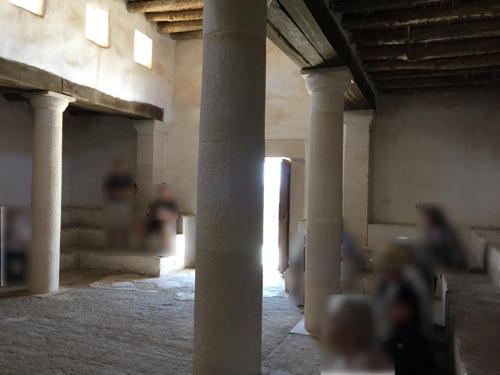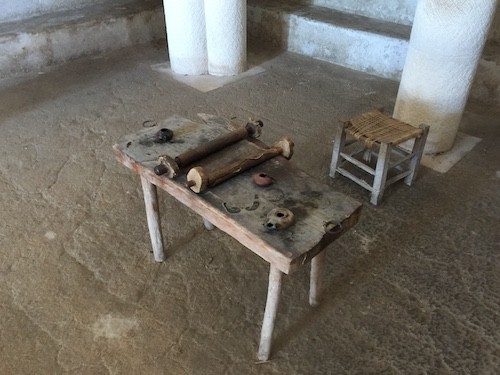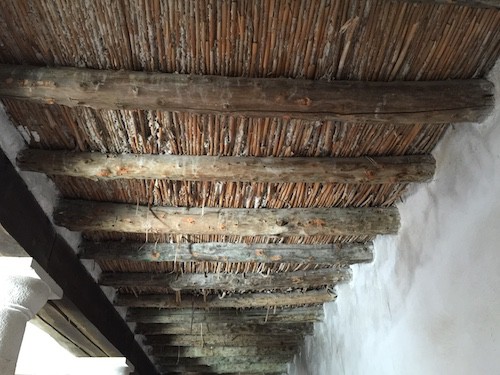Homecomings don’t always work out the way you expect. Three of the gospels tell accounts of Jesus returning to his hometown, Nazareth, where he got a rather rude welcome.
The earliest account appears in Mark 6:1-6. Jesus teaches in the synagogue on Shabbat, and his friends and neighbors are, to say the least, unimpressed. Jesus responds by saying that a prophet is not without honor, except in his own country. The townspeople take offense at him. The end result is that, aside from healing a few sick people, Jesus doesn’t make much of a splash.
The next-oldest account comes up in Matthew 13:53-58, and it runs along pretty much the same lines as the story in Mark. Jesus teaches in the synagogue. The people want to know where he learned it all, and they take offense. Jesus responds with his saying about how a prophet is not without honor, etc.
The newest account from the gospels is the one told in Luke 4:16-30, and it’s a slightly longer tale. In this telling of the incident, we see a full-scale riot. On Shabbat, Jesus goes to the synagogue and is invited to read from the book of Isaiah. He reads a certain passage and breaks off reading it in mid-stream, just before the part about the Day of Vengeance. The villagers ask who he thinks he is. Jesus elaborates on the idea that prophets never get any respect in their own country. The villagers rise up in rage, drag him away to the “brow of the hill,” and try to throw him over the edge. Somehow or other, Jesus escapes death. (Wouldn’t we like to know how!)
What Ancient Nazareth was Like
I’ve been to Nazareth several times. It’s a good-sized town in the northern part of modern Israel, with a population of more than 70,000. In the oldest part of the town, streets are tight, traffic is intense, and buildings are packed close together. You can visit numerous churches, including the famous Basilica of the Annunciation.
If you visit Nazareth, you could easily get the idea that it must have been a large, bustling town in the time of Jesus. But in fact the archaeological remains from the first century are pretty scarce. The first-century village appears to have been very small.
I’ve seen estimates that Nazareth in the first-century was a village of 200 to 400 people. In a village that small, everyone pretty much knows everyone. In a village that small, everyone is related to pretty much everyone. In a village that small, old grudges can last a long time.
Nazareth Village
If you do visit Nazareth, I highly recommend that you visit a site called Nazareth Village. When I first heard of Nazareth Village and browsed its website, I got the impression that it was just a hyped-up tourist trap. But I was wrong. I talked to one of my friends who’s a New Testament scholar with a lot of experience working on archaeological digs, and he assured me that Nazareth Village is absolutely worth visiting. It’s backed by solid research. The workers there wear clothes in the style of first-century Galilee. The steeply sloping ground has been terraced much as it was in the first century. You can see people threshing grain, caring for animals, weaving cloth, and working with carpenter tools, much as it was done in the first century. A wine vat has been excavated there that dates to the first century, and it’s easy to imagine that Jesus himself might have stomped grapes on that very spot as a young man. If you arrange things in advance, you can eat a meal of foods that were common in the first century.
I’ve been to Nazareth Village twice and really enjoyed it. One of the high points of the site is a small synagogue replica constructed in much the same way that the village synagogue would have looked in the time of Jesus. (A number of first-century synagogues have been excavated in Israel, so modern archaeologists have a reasonable idea of how they looked.)
The Synagogue at Nazareth Village
The first thing you notice about the synagogue at Nazareth Village is that it’s small. Most American houses cover more area than this synagogue.
When you go inside, you see stone benches that rise up like bleachers on all four sides. But these “bleachers” only go up three levels. So seating in the synagogue was very limited. You could fit in 100 people comfortably. Possibly 200, if you really packed them in. Here’s a photo I took from one corner of the synagogue. I’ve blurred out the other tourists in the photo:

There’s a small table in the center of the synagogue where someone could read from a Torah scroll or one of the prophets.

The roof of the synagogue has a shallow slope, just enough to shed rainwater. It’s supported by wooden rafters. Large reeds are laid cross-wise on these rafters. On top of the reeds is a thick layer of hard-packed clay.

And that’s the synagogue. Easy to build, and easy to maintain, but without a lot of creature comforts. As a side note, we know that Jesus and his father were builders of some sort. English Bibles usually call Jesus a “carpenter,” but the Greek word used is “tekton,” which means someone who works in stone or metal or wood. Or all three. So it’s possible that Jesus and his father and other family members may have helped build the synagogue at Nazareth. It seems very likely to me that they would have helped maintain it. For more about the family of Jesus, see my blog post The Mysterious Brothers of Jesus.
Imagine the Scene
Sitting in the synagogue, I could imagine a Shabbat service gone bad. In a dirt-poor village where a local boy gets famous and comes home, it might look to his old friends like he’s gotten too big for his britches. Old grudges could easily surface. I could imagine angry grumbling, then barbed insults, then loud shouting, and then a riot.
There’s more to say about this story, and I’ll say more in future blog posts. The riot scene in the synagogue at Nazareth will play a key role in Book 1 of my Crown of Thorns series. But for the moment, it’s enough to get a feel for the place itself—the tiny village and the tiny synagogue that were home to a Jewish boy who grew up to make a name for himself far beyond what his friends ever imagined.
